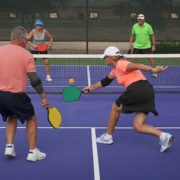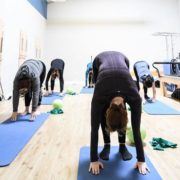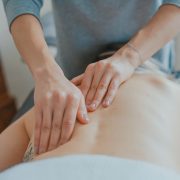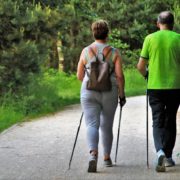Is it Safe to Push Through Pain?
“No pain no gain” is a common phrase we hear but is it accurate? Not always. And it’s important to know when it’s safe – and not safe – to push through your pain. While unpleasant – pain provides us with important information that when understood – can be extremely valuable.
But first, what is pain exactly?
Britannica.com defines pain as “a complex experience consisting of a physiological response to a noxious stimulus”. Say what? In simpler terms – pain is our warning mechanism. It’s designed to alert us of harmful stimuli that are primarily associated with injury or threat of injury. The key word here is threat. Not all stimuli are harmful, even if it elicits pain. And that is where our cognitive brain must kick in to interpret the signal of pain and decide… should or shouldn’t you push through pain?
So how does your brain decide?
Well, your brain learns how to deal with pain from experience. And how those experiences are shaped is important. For example, if your brain is conditioned to think that all pain signals are “bad” or harmful – it’s going to always trigger you to withdraw or freeze. While this might be the safest option from a glance, it’s not always the most effective, and it can cause you more problems down the line. In fact, this is how a lot of chronic pain problems are formed. Your body becomes hypersensitive to pain signals because your brain never learns how to interpret them properly. For some suffering from chronic pain – it’s because your brain has been conditioned to think all pain is dangerous and your body – in turn – will reject any attempt to rectify it.
The best response to pain is to examine how it behaves versus judging it at first glance. There are some instances where pain and damage are synonymous and obvious – such as burns, trauma, broken bones, etc. But for most musculoskeletal aches and pains – it’s not so clear. How your pain behaves in specific situations and over time is what’s most important and it’s how your brain learns what to do.
Does it get worse? Does your pain move around? Does it come and go? Does it get better and stay better the more you move? Or does it worsen the more you move? Understanding how your pain behaves is the first and most important thing to look at when it comes to pushing through your pain or holding back.
For example, let’s look at an acute back pain episode.
It’s typically debilitating, and the last thing you want to do is move. If you rest, your pain will eventually subside, but you’ve taught your brain that doing nothing is the best response, until you hurt your back again. This strategy will only get you so far. Eventually, rest doesn’t work anymore and you’re at a loss. Movement is almost always the best solution for back pain – even when it’s scary. The first time you try to move after a debilitating back pain episode is typically terrible. But the secret to movement is in its repetition.
You want to evaluate how your back pain responds to any given movement over time versus just once. Does it get better and stay better the more you move or stretch a certain way? Or does it only get better temporarily? The response you’re looking for is getting and staying better. This is the kind of experience that reinforces your brain to take an active approach to pain and appropriately push through it. When you have the opposite response, then you know to stop.
I like to think of pain’s behavior like a traffic signal.
When you move in a specific way more often and it feels better – green light – keep going. When you perform a specific movement and it feels worse – stop – that’s a red light. Yellow lights are murky and where you need to decide whether or not it’s wise to push through pain. If pain is not changing and staying the same – or you consistently have good days and bad days – then you might want to “push”. You’ll find yourself at either a green light or red light. This is where you get valuable and reliable information about your pain and know exactly what to do.
Pain is a complicated concept that even those in the medical field have difficulty understanding and managing well. I’m not a fan of managing pain via medication. While it might be a successful strategy for getting rid of pain quickly – it tells you nothing and gives you the best chance of it coming back again or living a life hooked on that medication. Eighty percent of the time the best “medicine” for pain is movement. Use these guidelines to help you figure out if you’re on the right track or not – but the best advice when it comes to getting rid of musculoskeletal pain is to talk to an expert who understands how pain behaves and can help you figure out how to manage it on your own.
Ready to get help with your pain or injury?
Request to speak to one of my specialists to see if we would be the right fit to help you get out of pain. CLICK HERE to request a Free Discovery with one of my specialists.
Dr. Carrie Jose, Physical Therapist and Pilates expert, owns CJ Physical Therapy & Pilates in Portsmouth, NH. To get a free copy of her guide to taking care of back pain – click here.











